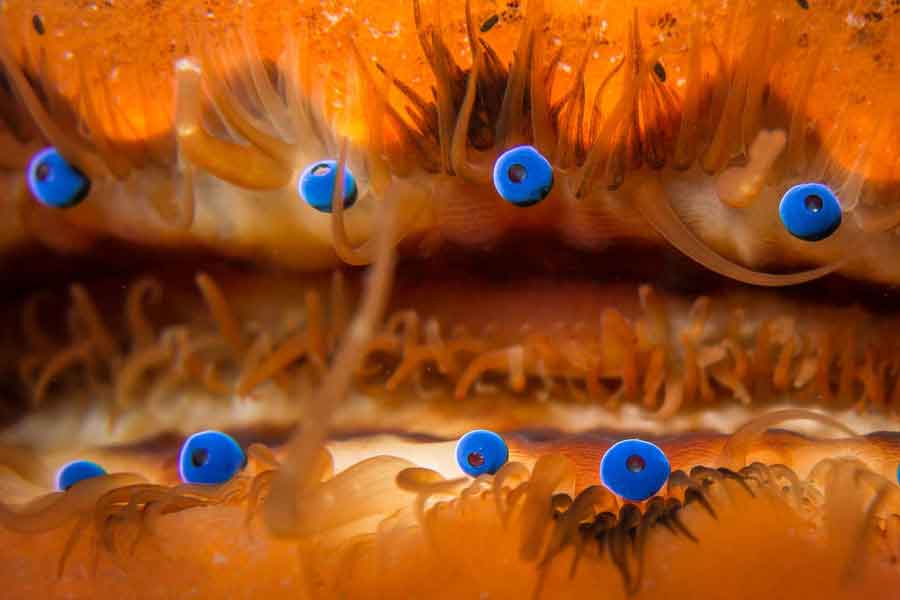
Life beneath the surface of the sea can often be very risky for certain organisms, which is why only those better adapted to anticipate dangers in time and develop their own defense mechanisms will survive.
The scallop, or Pecten maximus, is a bivalve mollusk with unequal valves—one flat and the other convex—that has evolved to anticipate the lurking dangers. It is equipped with numerous bright eyes along the edge of its mantle, which keep the animal informed of moving objects in its surroundings. Each of these eyes has two retinas, one sensitive to decreasing light intensity and the other to increasing intensity. Although these eyes do not conform to the concept of vision as humans understand it, they enable the scallop to perceive shadows and different light intensities. Despite their limitations, they provide enough perception for self-defense.
If the scallop detects a fish approaching too closely, it will simply close its valves. However, if it senses the scent of an octopus or a starfish—its most feared predators—it will initiate a rapid escape. It propels itself through the water by ejecting jets of water from a point near the hinge of its valves. The scallop is an edible and highly prized Atlantic species, commonly consumed as seafood. In Argentina, it is harvested from the sea, particularly in the Valdés Peninsula, by «marisquero» divers. Fishing of scallops is carefully regulated to ensure sustainable exploitation of this resource and prevent its extinction.
«One cannot defend what one does not love, and one cannot love what one does not know.»

